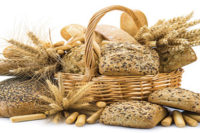The numbers regarding heart disease are staggering. More than one in four Americans die as a result of the disease, and it is the leading cause of death for men and women. It impacts so many of us, either personally or through our connections to loved ones, friends and family.
 Americans rank heart health as their leading health concern overall. Thankfully, even people who wait until later in life can substantially reduce their risk of heart disease by adopting a few beneficial habits, such as exercising, maintaining a healthy weight, getting enough sleep, undergoing regular health screenings, avoiding tobacco and eating a heart-healthy diet.
Americans rank heart health as their leading health concern overall. Thankfully, even people who wait until later in life can substantially reduce their risk of heart disease by adopting a few beneficial habits, such as exercising, maintaining a healthy weight, getting enough sleep, undergoing regular health screenings, avoiding tobacco and eating a heart-healthy diet.
Studies show that, combined with physical activity, maintaining a healthy diet can reduce the risk of heart disease by as much as 80 percent. New guidelines from the American Heart Association (AHA) emphasize a balanced diet that includes fruits, vegetables, poultry, fish and a variety of grains, including whole grains. Not only have studies found that consuming three servings of whole grains daily can significantly cut a person’s risk of heart disease, grains can also play a role in controlling cholesterol, weight and blood pressure.
To generate more awareness among consumers of grain’s critical position on the plate (alongside other components of a balanced diet), the Grain Foods Foundation partnered with AHA and Dr. Suzanne Steinbaum, cardiologist, Lenox Hill Hospital, New York, and a member of the GFF Scientific Advisory Board. In doing so, we highlighted the power people have to improve their cardiovascular health simply by making changes to what they buy, cook and consume.
Getting the industry involved
From an industry perspective, there are many opportunities for bakers and snack producers to help consumers more easily plan a heart healthy diet. For instance, they could work with retailers to develop point-of-purchase signage to help consumers make more informed purchasing decisions, as well as to leverage AHA’s Heart-Check program certification, if possible.
It is equally important for food producers to educate consumers outside the store. Promoting organizations and programs like AHA’s Go Red for Women can increase awareness of the foods that play a beneficial role in women’s heart health. Furthermore, companies can work with cardiovascular health experts who can authentically communicate this message to consumers and the media.
The food industry can also play a more active role in terms of formulation. While it is certainly not easy for manufacturers to reduce the sodium content in existing and new products, it is an important step. Companies are already exploring ways to reduce sodium levels without sacrificing taste and have made great strides in doing so. In fact, according to Mintel’s Feb. 2013 “Attitudes Toward Sodium” report, from 2009–2013, sodium levels decreased 10.6 percent in bread products.
One promising development has been the use, by some food producers, of potassium chloride, which not only replaces salt’s functional qualities, but helps to lower blood pressure. While there are limitations, continued work in this area will be beneficial, but only with bolstered industry support.
While it is especially important for people with a family history of heart disease to get enough exercise and take a close look at what they’re eating, everyone should take these precautions. Not only can people improve their cardiovascular health, they’ll promote their overall well-being, too.
By working together to generate awareness of habits that promote heart health, making it easier for consumers to implement them and continuing to work on product innovation, the food industry can continue to chip away at this enormously important issue.
Christine Cochran, executive director of the Grain Foods Foundation (GFF), is past president of a Washington-based trade association representing commodity futures exchanges and exchange participants.


